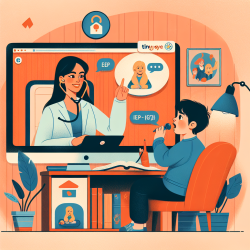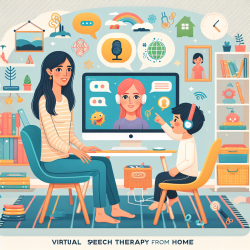As a Speech Language Pathologist (SLP), the Individualized Education Program (IEP) meeting is a crucial part of your role in supporting students with diverse needs. Whether you're working with children who have autism or other speech and language challenges, effective IEP planning can make a significant difference in their educational outcomes. Here are some strategies to help you master IEP meetings and ensure that your students receive the best possible support.
Preparation is Key
Before the IEP meeting, gather all relevant data and assessments. This includes progress reports, therapy session notes, and any standardized test results. Having this information at your fingertips will allow you to present a clear and comprehensive picture of the student's current abilities and needs.
Collaborate with the Team
IEP meetings are a team effort. Collaborate with teachers, parents, and other specialists to create a well-rounded plan. Each team member brings a unique perspective, and their input is invaluable in developing an effective IEP. Make sure to communicate openly and listen actively to everyone's contributions.
Set Clear, Measurable Goals
One of the most important aspects of an IEP is setting goals that are specific, measurable, achievable, relevant, and time-bound (SMART). For example, if you're providing speech therapy for autism, a goal might be to improve social communication skills through targeted interventions. Clearly defined goals help track progress and make it easier to adjust the plan as needed.
Utilize Online Therapy Services
In today's digital age, online therapy services like those provided by TinyEYE can be a game-changer. Online therapy offers flexibility and accessibility, making it easier to deliver consistent, high-quality services. Consider integrating online therapy into your IEP plans to enhance the support you provide to your students.
Document Everything
Documentation is essential in the IEP process. Keep detailed records of all meetings, communications, and interventions. This not only helps in tracking progress but also provides a clear history of the student's journey, which can be invaluable for future planning and assessments.
Follow Up and Adjust
An IEP is not a static document; it's a living plan that should evolve as the student grows and progresses. Regularly review and update the IEP to reflect any changes in the student's needs or achievements. Continuous follow-up ensures that the support provided remains relevant and effective.
Encourage Parent Involvement
Parents play a critical role in the IEP process. Encourage their involvement and make sure they understand the goals and strategies outlined in the IEP. Providing them with resources and support can empower them to reinforce the interventions at home, leading to better outcomes for the student.
Mastering the IEP process requires preparation, collaboration, and a commitment to ongoing improvement. By following these strategies, you can ensure that your students receive the individualized support they need to thrive. Ready to take the next step? Explore how TinyEYE's online therapy services can enhance your IEP plans and provide your students with the best possible care.










